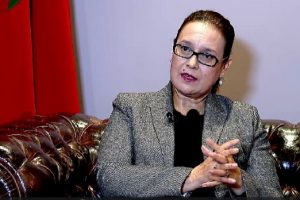
The COMESA East African Community Horticulture Accelerator Program (CEHA) Ethiopia National Chapter was launched recently with a vision to drive sustainable growth and development in the horticulture sector across the COMESA and East African Community (EAC) regions.
The Ethiopia CEHA national chapter is expected to serve as the central hub to coordinate, catalyze and accelerate horticulture development in Ethiopia, with particular focus on the three anchor value chains; potato, avocado, and onions.
COMESA’s interest is in establishing regional clusters to enhance investments by government institutions and the private sector. Harmonizing policies and standards, facilitating access to capital and opportunities, and meeting market demands for products like avocados are key priorities. Empowering women and youth within CEHA is crucial for economic empowerment and quality improvement.
CEHA in collaboration with its national chapter aspires to contribute to increasing e export trade among African countries in horticulture products. This will assist in fulfilling the ever-increasing agricultural demand for increasing demand for agricultural products regionally and globally.
Today’s Guest Dr. John Mukuka is the Chief Executive Officer of Alliance for Commodity Trade in Eastern and Southern Africa (ACTESA). During a brief stay Dr. Mukuka had with The Ethiopian Herald, he explained the activities of the COMESA, the importance of launching the CEHA Ethiopia National Chapter he avowed the readiness of ACTESA to further reinforce its commitment in the effort to accelerate Ethiopia’s horticulture transformation. Have a nice read!
How do you explain Alliance for Commodity Trade in Eastern and Southern Africa?
The Alliance for Commodity Trade in Eastern and Southern Africa (ACTESA) was launched on September 24 2008 by the Common Market for Eastern and Southern Africa (COMESA)’s Ministers of agriculture. On June 9, 2009, ACTESA was established by the Heads of State of COMESA (the COMESA Authority) as a Specialized Agency to integrate small farmers into national, regional and international markets.
On March 1, 2010 ACTESA signed an agreement with COMESA on the implementation of agricultural programmes in the region. The agreement is meant to accelerate the implementation of regional initiatives in agriculture, trade and investment.
Key areas of focus assigned to ACTESA include the development of regional agricultural policies; promotion of investment in agriculture; promotion of trade in agro-commodity products and development of production and marketing structures; development of the agricultural, livestock, pastoral and fisheries sectors and consultation with the private sector and civil society organizations on agricultural development matters especially agro-commodities trade.
The main goal of ACTESA is to increase farmer productivity and incomes in the Eastern and Southern Africa region through trade in strategic agricultural commodities.
ACTESA is the answer to the region’s agricultural challenges that include trade related constraints, low productivity, technological and policy related constraints. It is an important institution in a region where 85 percent of all staple crop producers are smallholders and of these, only about 15 percent produce for the market and are characterized by poor organization with no predictable selling mechanisms.
ACTESA responds to the Comprehensive Africa Agriculture Development Programme (CAADP)’s Pillar II and III agenda, that seek to improve rural infrastructure and trade-related capacities for market access and increase food supply, reduce hunger, and improve responses to food emergency crises respectively.
Consequently, ACTESA is the primary agency for achieving the COMESA vision of increased regional integration and improved competitiveness of staple food markets, leading to broad based growth and decreased food insecurity.
The COMESA Secretariat, through ACTESA, aims to transform the agricultural industry in the region, doubling or tripling its value in the next 10 years. This growth will require coordinated efforts in infrastructure, labor systems, and employment opportunities for women and youth. High-value fruits and vegetables are positioned to be more profitable than cereals, meeting the increasing demand for domestic and export markets.
Could you please explain to us the benefits of CEHA?
Within COMESA, we have over 12 institutions that coordinate and implement programs for the common market. We have the Trade and Development Bank dealing with banking in Africa, as well as the Yellow Card Insurance.
We also have institutions like Comfort that focus on women and youth. The launch of CEHA in Ethiopia is critical to contributing to the growth of the horticulture sector in Ethiopia.
The benefit of CEHA is for the horticultural industry within the COMESA member states, which is currently valued at about 4 billion US dollars. With the launch of CEHA in Ethiopia, it has the potential to triple the horticultural industry within the next 5 to 10 years.
The benefits extend to the private sector and the 90 million small farmers in COMESA areas. They will have access to planting materials, markets, and regional labor systems. This is a significant benefit for the Ethiopian Ministry of Agriculture, the private sector in Ethiopia, and both smallholder and commercial growers.
I want to thank the government of Ethiopia for holding a sensitization workshop on COMESA-aligned national seed regulations and laws, which were approved by parliament. This positions Ethiopia to become a hub for seed trade. One of the critical companies I want to work with is Irish Potatoes, which are already on the COMESA catalogue, facilitating easier movement of potato varieties. Ethiopia has already harmonized seed laws and regulations, making it a seller of crop diversity. This will be crucial for producing cultural products with CEHA to ensure the best genetic materials and market access.
As the leader of the renowned Alliance for Commodity and Trade in Eastern and Southern Africa, what is your organization currently doing?
ACTESA targets geographical areas within Eastern and Southern Africa that include a larger number of vulnerable populations but also have the potential to produce surplus staples for the market.
The target beneficiaries from these areas are farming communities in selected areas that are drought prone, emerging from conflicts, or otherwise vulnerable and may or not be receiving support from food assistance programs to improve their production systems.
By creating ACTESA, COMESA Member States showed commitment to ensuring that food assistance and other types of food security interventions in the region are development oriented and promote sustainability of food security among target beneficiaries.
The Alliance for Commodity and Trade in Eastern and Southern Africa (ACTESA) is leading the regional facilitation and coordination of CEHA in five countries. We have already launched CEHA in Ethiopia and plan to do so in Tanzania, Rwanda, Uganda, and Kenya. Our role is to coordinate the catalytic potential of CEHA in these countries, including facilitating the signing of MOUs between the Ministry of Agriculture, Agriculture Association of Ethiopia, and ACTESA.
How will you facilitate trade in these countries that are planning to implement CEHA?
ACTESA facilitates the regional harmonization of agricultural industry standards, including SPS standards, CD standards, and market access standards. We will also work towards implementing CEHA and a regional leveling system to ensure that products like Irish potatoes, avocados, and onions meet regional standards. This will enable them to have the same CEHA level and access regional and global markets
Regarding the quality and quantity of products, what is your organization doing to address these issues in African countries?
We are implementing capacity-building programs to improve the quantity and quality of products. We will also train the private sector on quality standards to meet regional and global market demands. By ensuring that products meet CEHA standards, we aim to increase exports and meet the demands of markets like Europe.
CEHA will provide opportunities for landowners with less than one hectare of land to profit from high-value crops. The focus on high-value fruits and vegetables will benefit both domestic and export markets, ensuring quality standards are met. This will boost the economy and benefit consumers in Europe and other markets. I wish the best for the project and look forward to its success.
What challenges has your organization faced in implementing these initiatives?
One of the main challenges has been the low capacities of countries in producing Onions, Avocados, and Irish Potatoes. We are working to increase capacity through training and facilitating access to funding for growers who want to expand. The Bill and Melinda Gates Foundation provides funding for private entities participating in CEHA.
Why are you focusing on only three products?
Focusing on three products allows us to maximize our potential and capacity strategically. By starting with three products, we can gain experience in production, labor systems, and value chains for export markets. This will help us expand to more products in the future. Funding will also be allocated to improve infrastructure at borders to ensure the quality of exports.
Can you share best practices from countries implementing CEHA?
CEHA will open up opportunities for the African free trade area by expanding labeling requirements to cover 24 member states of the African Union.
How does CEHA and the African free trade area relate?
The African Continental Free Trade Area (AfCFTA) creates a single continental market for goods and services in Africa. It further aims to reduce trading problems such as different regulations from one African country to another.
CEHA will pave the way for the African free trade area by setting minimum labeling requirements within commercial member states. This will eventually expand to cover 24 member states of the African Union, creating a building block for trade across Africa.
Thank you for sharing this information. Is there anything else you would like to add?
I am pleased on behalf of ACTESA to mention the significant work done by COMESA institutions in the last 15 years, the Division of Gender, and the Institute of Climate Change among other institutions. The upcoming ministerial meeting in November will focus on aligning decisions with CEHA to streamline processes. I will present any critical recommendations from Ethiopia to ensure swift action.
We are excited about the private sector-driven implementation of CEHA, with support from the public sector. We look forward to the positive transformation and impact of CEHA in the COMESA and EAC region, transcending to the global level.
Thank you.
It is my pleasure.
BY GIRMACHEW GASHAW
THE ETHIOPIAN HERALD SATURDAY 17 AUGUST 2024





